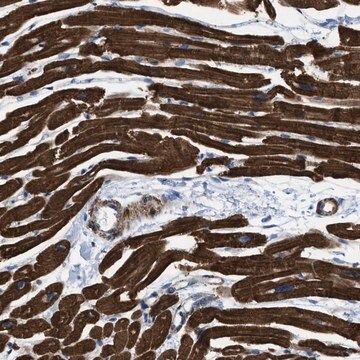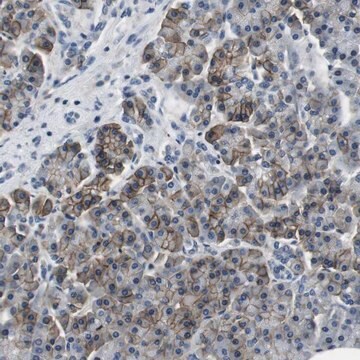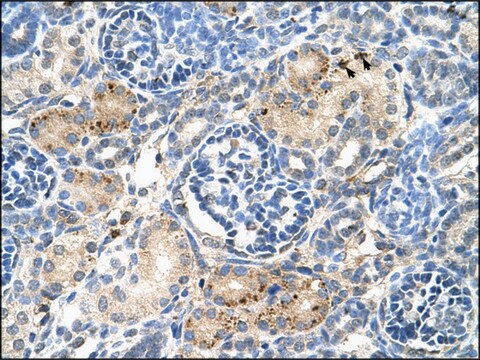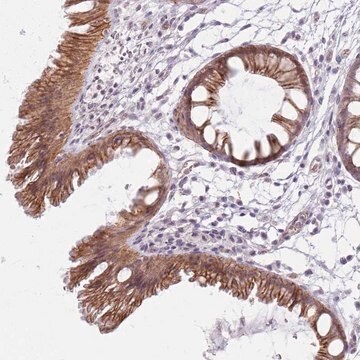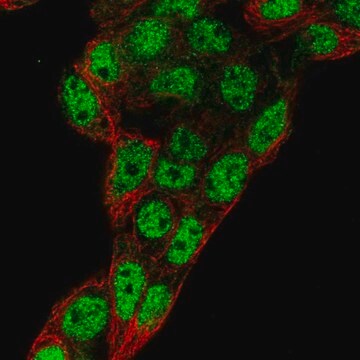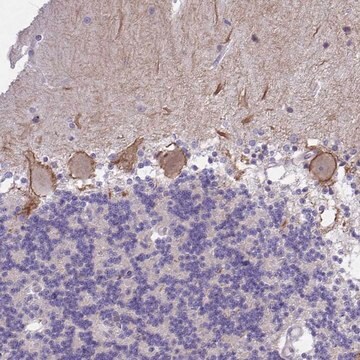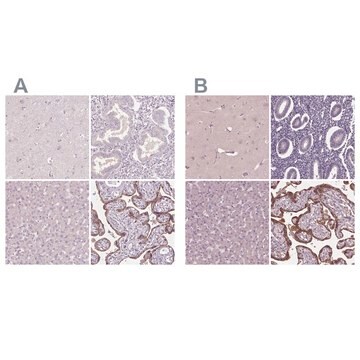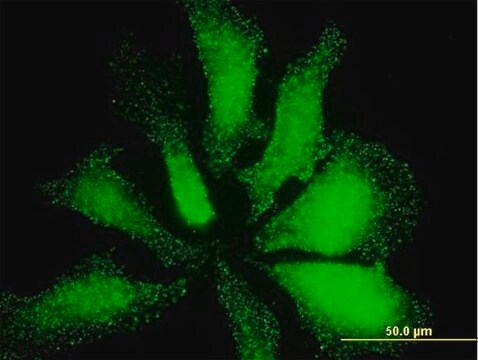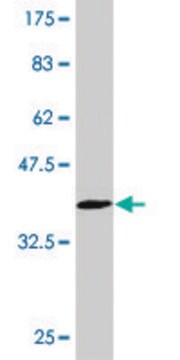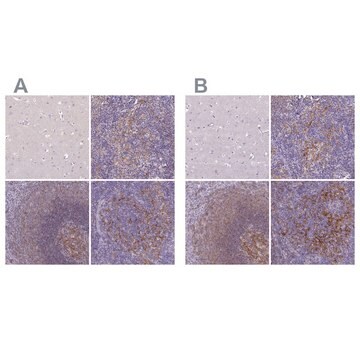추천 제품
생물학적 소스
rabbit
Quality Level
결합
unconjugated
항체 형태
affinity isolated antibody
항체 생산 유형
primary antibodies
클론
polyclonal
제품 라인
Prestige Antibodies® Powered by Atlas Antibodies
양식
buffered aqueous glycerol solution
종 반응성
human
향상된 검증
recombinant expression
orthogonal RNAseq
Learn more about Antibody Enhanced Validation
기술
immunoblotting: 0.04-0.4 μg/mL
immunohistochemistry: 1:200-1:500
면역원 서열
VTPWDPKKIPKQARDYVPIATDRTRLLAEGKKPRQRYMEKSGKCNVHHGNVQETY
UniProt 수납 번호
배송 상태
wet ice
저장 온도
−20°C
타겟 번역 후 변형
unmodified
유전자 정보
human ... KCNJ5(3762)
면역원
G protein-activated inward rectifier potassium channel 4 recombinant protein epitope signature tag (PrEST)
애플리케이션
Applications in which this antibody has been used successfully, and the associated peer-reviewed papers, are given below.
Immunohistochemistry (1 paper)
Immunohistochemistry (1 paper)
특징 및 장점
Prestige Antibodies® are highly characterized and extensively validated antibodies with the added benefit of all available characterization data for each target being accessible via the Human Protein Atlas portal linked just below the product name at the top of this page. The uniqueness and low cross-reactivity of the Prestige Antibodies® to other proteins are due to a thorough selection of antigen regions, affinity purification, and stringent selection. Prestige antigen controls are available for every corresponding Prestige Antibody and can be found in the linkage section.
Every Prestige Antibody is tested in the following ways:
Every Prestige Antibody is tested in the following ways:
- IHC tissue array of 44 normal human tissues and 20 of the most common cancer type tissues.
- Protein array of 364 human recombinant protein fragments.
결합
Corresponding Antigen APREST72858
물리적 형태
Solution in phosphate-buffered saline, pH 7.2, containing 40% glycerol and 0.02% sodium azide
법적 정보
Prestige Antibodies is a registered trademark of Merck KGaA, Darmstadt, Germany
면책조항
Unless otherwise stated in our catalog or other company documentation accompanying the product(s), our products are intended for research use only and are not to be used for any other purpose, which includes but is not limited to, unauthorized commercial uses, in vitro diagnostic uses, ex vivo or in vivo therapeutic uses or any type of consumption or application to humans or animals.
적합한 제품을 찾을 수 없으신가요?
당사의 제품 선택기 도구.을(를) 시도해 보세요.
Storage Class Code
10 - Combustible liquids
WGK
WGK 1
Flash Point (°F)
Not applicable
Flash Point (°C)
Not applicable
개인 보호 장비
Eyeshields, Gloves, multi-purpose combination respirator cartridge (US)
가장 최신 버전 중 하나를 선택하세요:
Chih-Jen Cheng et al.
The Journal of clinical endocrinology and metabolism, 100(1), E155-E163 (2014-10-28)
Aldosterone-producing adenoma (APA) has been linked to mutations in the KCNJ5 gene encoding the inward-rectifying potassium (K(+)) Kir3.4 channel. These mutations abolish the K(+) selectivity of Kir3.4 and, consequently, cause sodium (Na(+)) leak, depolarized membrane potential, and nonsuppressible aldosterone secretion.
Elena A B Azizan et al.
Nature genetics, 45(9), 1055-1060 (2013-08-06)
At least 5% of individuals with hypertension have adrenal aldosterone-producing adenomas (APAs). Gain-of-function mutations in KCNJ5 and apparent loss-of-function mutations in ATP1A1 and ATP2A3 were reported to occur in APAs. We find that KCNJ5 mutations are common in APAs resembling
Elena A B Azizan et al.
The Journal of clinical endocrinology and metabolism, 97(5), E819-E829 (2012-03-24)
Aldosterone-producing adenomas (APA) are heterogeneous. The recent finding of somatic KCNJ5 mutations suggests a genetic explanation. The objectives of this study were the following: 1) to compare transcriptional profiles in APA and adjacent adrenal gland (AAG); 2) to test whether
Junhua Zhou et al.
Hypertension (Dallas, Tex. : 1979), 65(5), 1103-1110 (2015-03-18)
Common somatic mutations in CACNAID and ATP1A1 may define a subgroup of smaller, zona glomerulosa (ZG)-like aldosterone-producing adenomas. We have therefore sought signature ZG genes, which may provide insight into the frequency and pathogenesis of ZG-like aldosterone-producing adenomas. Twenty-one pairs
Carmela Maniero et al.
Hypertension (Dallas, Tex. : 1979), 70(2), 357-364 (2017-06-07)
Heterogeneity among aldosterone-producing adenomas (APAs) has been highlighted by the discovery of somatic mutations. KCNJ5 mutations predominate in large zona fasciculata (ZF)-like APAs; mutations in CACNA1D, ATP1A1, ATP2B3, and CTNNB1 are more likely to be found in small zona glomerulosa
자사의 과학자팀은 생명 과학, 재료 과학, 화학 합성, 크로마토그래피, 분석 및 기타 많은 영역을 포함한 모든 과학 분야에 경험이 있습니다..
고객지원팀으로 연락바랍니다.
